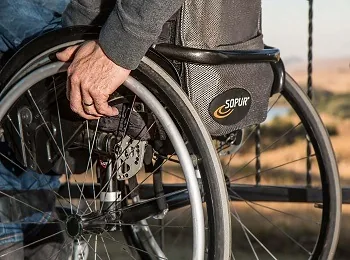Understanding Spinal Cord Injuries After an Accident
I’m Ed Smith, a Sacramento car accident and personal injury lawyer. Almost 40 percent of spinal cord injuries are caused by vehicular accidents, according to doctors at the Mayo Clinic. The force of an accident is sufficient to cause disc herniation as well as fractures. The spinal cord is protected by the vertebrae, but even this can’t withstand the mechanical force of a crash. Let’s take an in-depth look at spinal injuries, their effects and the physical and financial burden they bring.
What Is a Spinal Cord Injury?
The spinal cord is roughly 18 inches in length. The nerves within the spinal cord are called upper motor neurons. The ones that branch out from the spinal cord are called lower motor neurons. The lower motor neurons enter and exit from each vertebra. Some are called sensory nerves, and others convey motor impulses. The sensory impulses allow the brain to get input such as temperature or pain. The motor neurons carry brain-initiated impulses to the muscle. For example, if someone touches a hot surface with their hand, the sensory nerves will send that information to the brain. The brain will transmit a response through the motor nerves to remove the hand from the hot object.
How Damage to the Spinal Cord Affects the Body
The spinal cord is the primary conduit that carries impulses from the brain to the rest of the body. When the cord is damaged, the impulse path is affected. The degree of damage determines the number of impulses that can arrive at their destination. Damage to the spinal cord is different than a fractured vertebra. Despite a fracture, impulses still travel to different parts of the body, allowing for movement and many other functions.
The Vertebra
The spinal cord is enclosed by the vertebra. These circular-structured bones are divided into three levels. There are seven vertebrae in the neck. These are called the cervical vertebrae. The chest or thoracic portion of the cord has 12 vertebrae. The lumbar or low back portion has five. There are also five vertebrae in the sacral area of the spinal column. The sacral vertebrae are fused, forming a robust wedge-like structure that supports the body.
Types of Spinal Cord Injury
There are two types of spinal cord injury, complete and incomplete. In complete injury, there is no sensation below the point where the damage occurred. There is no voluntary movement either. In incomplete injury, there is some function below the point of injury.
How the Level of Injury Affects the Outcome
The higher the level of the injury, the greater the effect. For instance, a cervical injury above C4 may make it impossible for a person to breathe without a ventilator. In the same way, an injury at C5 may allow the person to move their shoulders and upper arms but not their wrists or hands. At C6, the individual may move their wrists but not move their hands. Cervical injury often results in quadriplegia. From C7 to T1, paraplegia is often seen.
If the first eight vertebrae of the chest are damaged, the hands can be used, but trunk motion is stilted or absent, including control of the muscles in the abdomen. When the remaining thoracic vertebrae are involved, this permits abdominal muscle control and sitting without restraints. Movement of the legs can be affected if the injury is in the lumbar or sacral areas. Besides movement, spinal cord injury can affect the bladder and the bowel.
Financial Loss Due to Spinal Cord Injury
The financial cost of spinal cord injury can be astronomical. This depends on the degree of injury. However, even injury to the lower spinal cord results in medical bills, rehabilitation and life changes. For many, working at the same job may be impossible. For others, there are mental and psychological adaptations that may mean deviation from life as it was before the accident.
Deserved Compensation
When someone is injured due to the negligence of another, the at-fault party is obligated to restore the financial loss the person experiences. This includes not just immediate expenses such as doctor bills, hospital stays and lost wages but also long-term rehabilitation. For some, it might also include at-home nursing services, hospital beds and breathing machines. An experienced attorney knows that compensation is not limited to the present but involves future costs. Also, pain and suffering that includes mental and emotional anguish plus continuing physical pain need to be accounted for and compensated.
Sacramento Car Accident and Personal Injury Lawyer
I’m Ed Smith, a Sacramento Car Accident and Personal Injury Lawyer. If you or someone in your family has been hurt by a negligent driver and suffered spinal cord injury, you need the assistance of an experienced lawyer. Reach out to me at (916) 921-6400 or (800) 404-5400. You can contact me online. I’ll provide free and friendly advice.
I’ve helped many residents of Sacramento with catastrophic or serious injuries to obtain just compensation.
I am a member of the Million Dollar Advocates. We are a forum for attorneys who have won a minimum of $1 million for clients.
If you would like to know more about my legal practice, go to the following pages for information:
Photo Attribution: https://pixabay.com/en/wheelchair-disability-injured-749985/
:cd [cs 901] cv

